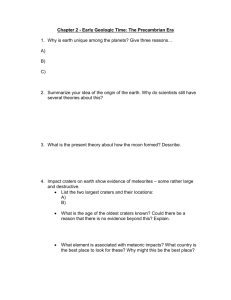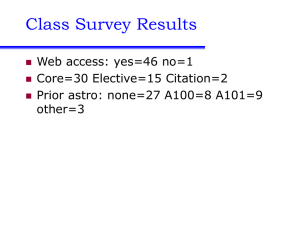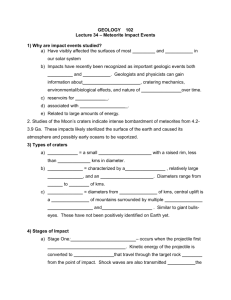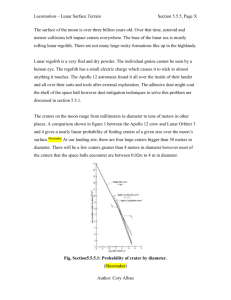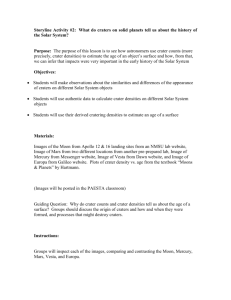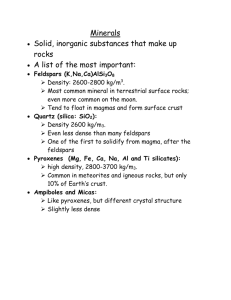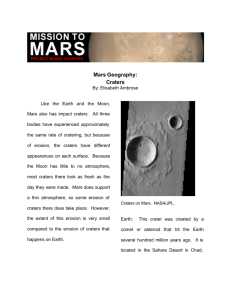Weathering and Erosion Activity
advertisement
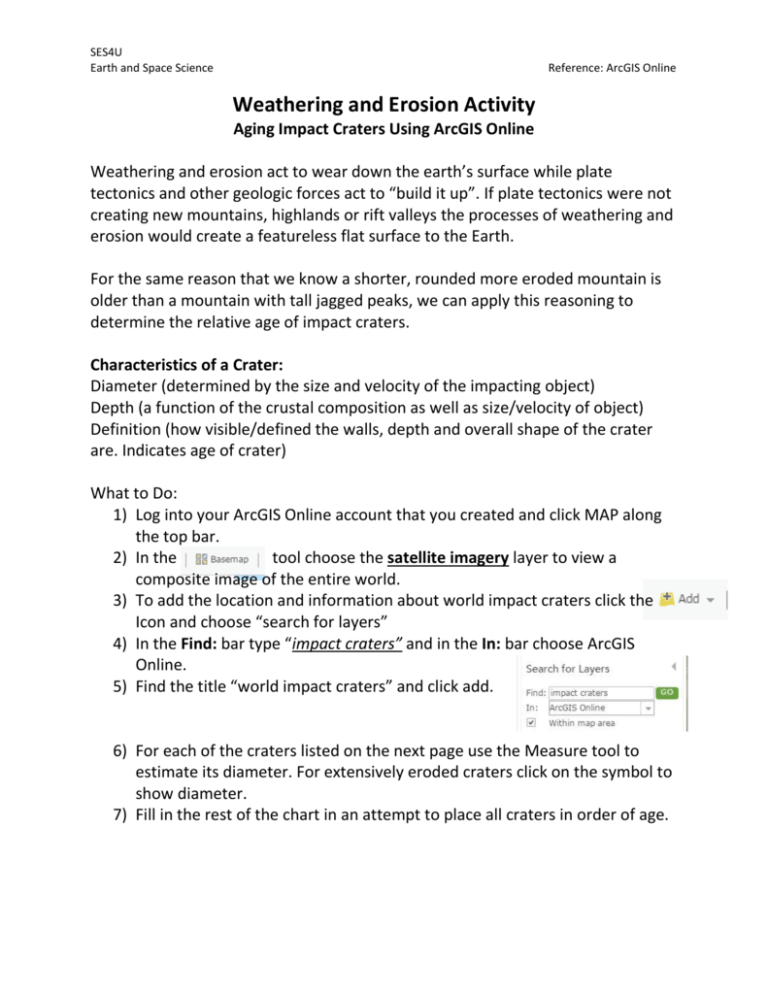
SES4U Earth and Space Science Reference: ArcGIS Online Weathering and Erosion Activity Aging Impact Craters Using ArcGIS Online Weathering and erosion act to wear down the earth’s surface while plate tectonics and other geologic forces act to “build it up”. If plate tectonics were not creating new mountains, highlands or rift valleys the processes of weathering and erosion would create a featureless flat surface to the Earth. For the same reason that we know a shorter, rounded more eroded mountain is older than a mountain with tall jagged peaks, we can apply this reasoning to determine the relative age of impact craters. Characteristics of a Crater: Diameter (determined by the size and velocity of the impacting object) Depth (a function of the crustal composition as well as size/velocity of object) Definition (how visible/defined the walls, depth and overall shape of the crater are. Indicates age of crater) What to Do: 1) Log into your ArcGIS Online account that you created and click MAP along the top bar. 2) In the tool choose the satellite imagery layer to view a composite image of the entire world. 3) To add the location and information about world impact craters click the Icon and choose “search for layers” 4) In the Find: bar type “impact craters” and in the In: bar choose ArcGIS Online. 5) Find the title “world impact craters” and click add. 6) For each of the craters listed on the next page use the Measure tool to estimate its diameter. For extensively eroded craters click on the symbol to show diameter. 7) Fill in the rest of the chart in an attempt to place all craters in order of age. SES4U Earth and Space Science Reference: ArcGIS Online Find the Following Craters: Location and Name Diameter & estimate of object size Interesting Features/landform Level of Weathering & Erosion: minimal, moderate, Extensive Relative Age Southwestern USA: Barringer Central USA: Manson Central USA: Decaturville Northern Quebec: Clearwater East and West Central France : Steinhelm Northern Quebec: Manicouagan Northern Ontario: Sudbury Basin Central India: Lonar Questions: 1. What aspects associated with climate might impact how quickly a crater weathers and erodes? 2. What role do you think wind (aeolian) could play in the visibility of impact craters? 3. Moving glaciers shape the earth’s surface by weathering and eroding huge amounts of rock over large areas (sometimes entire continents). How might observing impact craters that have experienced glaciation affect our ability to relative date them accurately? 4. The substrate (bedrock) where an impact occurs plays a role in the overall size, definition and preservation of a crater. Suggest an environment where a crater may weather and erode quickly vs. an environment where a crater would erode slowly. Age Ranking
